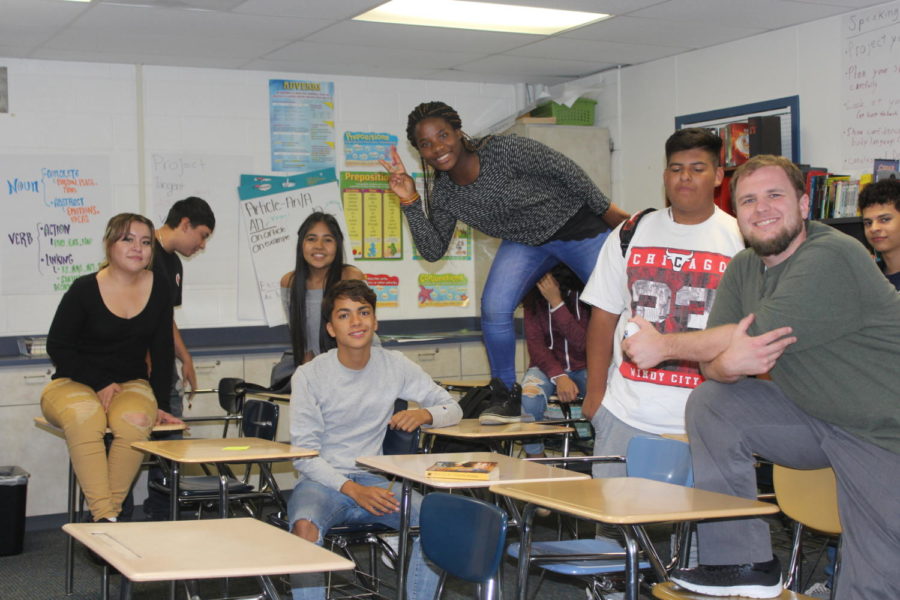ESL Program Speaks to Students
Profesor Nícolas Behrens con uno de sus clases de ESL.
October 16, 2017
Imagine that all your classes are in a language that is not your primary language.
On top of that, the culture is different from what you’re used to and you have to adapt. Now you have an idea of what school is like for our Wheat Ridge High students who are in the English as a Second Language, or the ESL program. These people have double the workload of classes that we all have, with the added difficulty of trying to learn, or better understand, a different language and culture from what they’re used to.
Almost 90 students in our school are still learning English, and more than twice that many don’t speak English as their first language. The ESL program, located in room #96, is an essential class to have for those students.
You might assume that all the students in this program are Mexican, or at least Latin American. This is not completely the case: 85% of the ESL students are Spanish-speakers. But besides Spanish, there are 15 other languages spoken by ESL students, ranging from German and Chinese to Kinyarwanda and Farsi. There are also considerably more ESL students this year than in years previous. Wheat Ridge’s ESL teacher for four years now, Nic Behrens said,
“We have 87 students in the program this year,” compared to the 50 students they had the previous year.
Every single one of these 87 ESL students is fluent in a language besides English. No matter where they are coming from, they all speak their first language and are working on fluency in English. One student even speaks two other languages besides English, and is able to understand another.
There are five ESL classes in place this year, with class sizes ranging from three to 20 students. Behrens said there are two public speaking classes, a “normal” language arts class, a reading and writing class, and a homework class. The homework class is primarily for students almost out of the program who just need a little bit of extra time to get their work done. The language arts class includes an emphasis on vocabulary. “It’s words you don’t normally think about,” said Behrens, “Like ‘diagram’ is very different from ‘drawing.’”
When asked about why he enjoys teaching ESL, Behrens responds that it is very fulfilling. “It’s kids that have a need to learn right now.” Helping these young people to connect with a culture and language different from their own really makes you feel good inside, he said.
The ESL students also enjoy the ESL program. “The teacher is really good at his job,” said sophomore Evelyn Pérez, a student in the program. “He helps the students a lot.”
Sophomore Carlos Bustos Ovalle said, “It’s really helpful. I think it gives students opportunities.”
Behrens said the primary purpose of the ESL program is “to help people talk to each other better: teachers to students, students to teachers, and students with each other … How to communicate is the biggest thing.”

